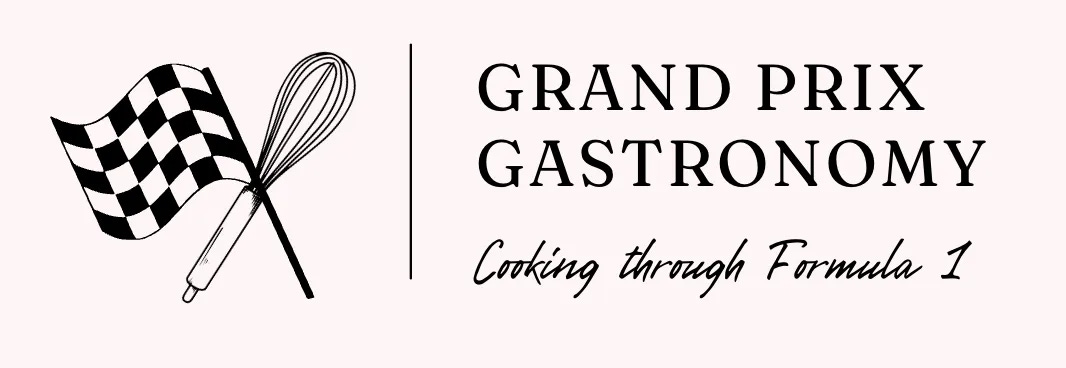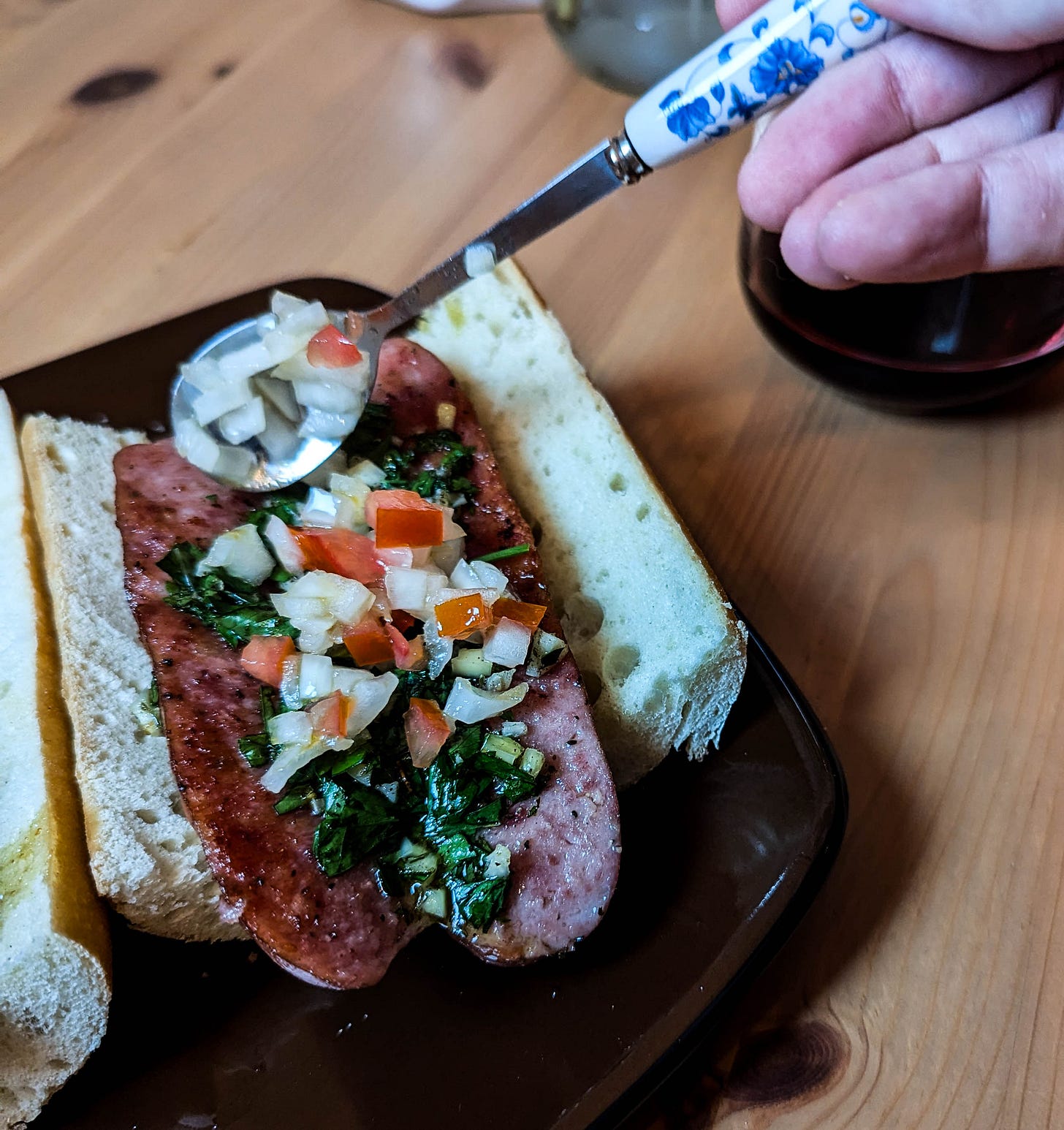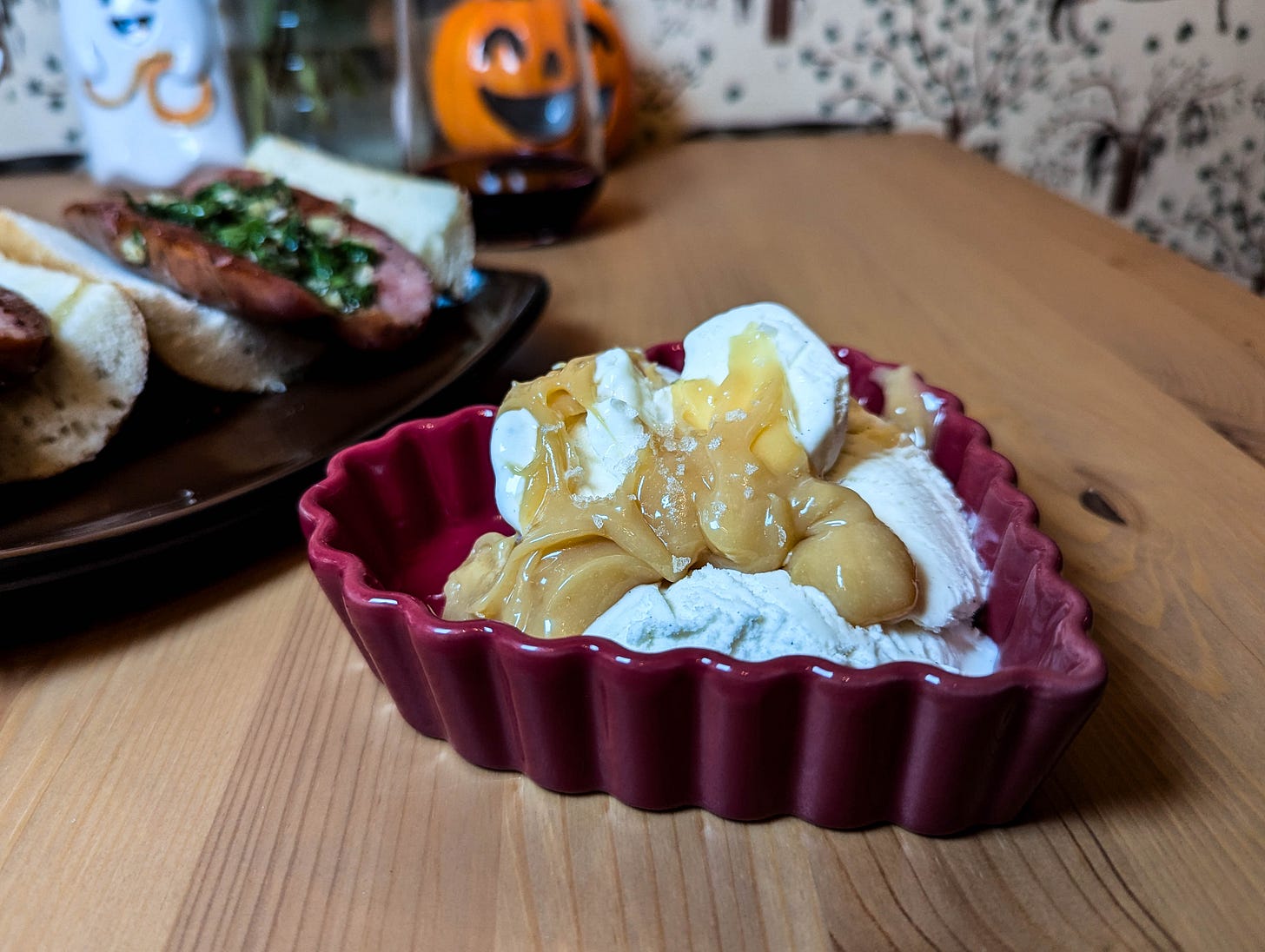Celebrating Franco Colapinto's Argentine childhood for the USGP!
Grilled sausage for choripán and the insanely delicious dulce de leche make for a great USGP pairing.
Welcome to Grand Prix Gastronomy! In 2024, this series is dedicated to cooking the favorite dishes of every driver on the grid.
The Foods That Franco Colapinto Loves
When I was building out my calendar for 2024's edition of Grand Prix Gastronomy, I knew I'd have a handful of race weekends that wouldn't correspond to a driver — after all, there are only 20 drivers on the F1 grid, and there are more races than that.
I'd marked off the US Grand Prix as a weekend to cook one of my own recipes; it's my home race, after all, and I figured I could have some fun whipping up one of my Blackstock Classic Dishes.
Then, of course, we had some mid-season line-up changes, and I realized I should probably cook dishes for the drivers who had been substituted in partway through the year! Hence: Franco Colapinto!
Blessedly, young Frank SodaHorse has been pretty open about his favorite meals in interviews around the world, picking everything from Argentine barbecue to pizza.
However, I found one particular source that I really loved. Colapinto shared some of his favorite childhood meals, including choripán and dulce de leche, in a conversation with an official Argentine travel website. Considering my original goal for this season's GPG was to cook the meals that remind the drivers of home, this seemed to be a perfect fit!
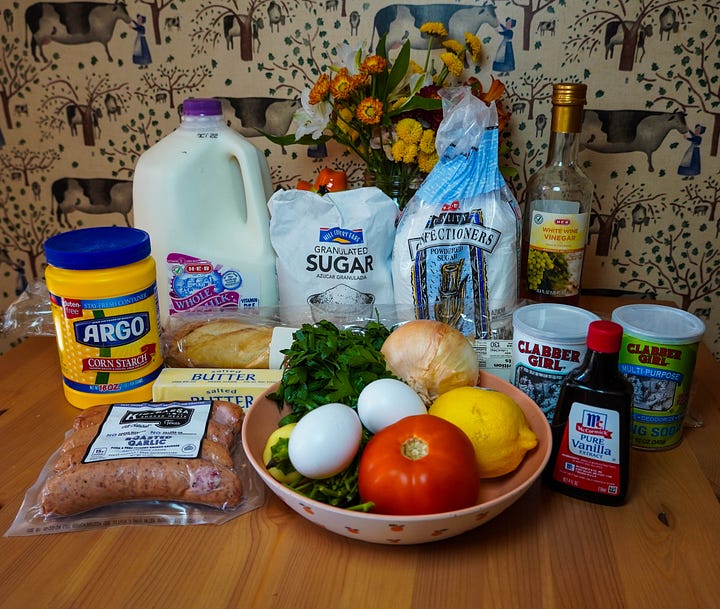
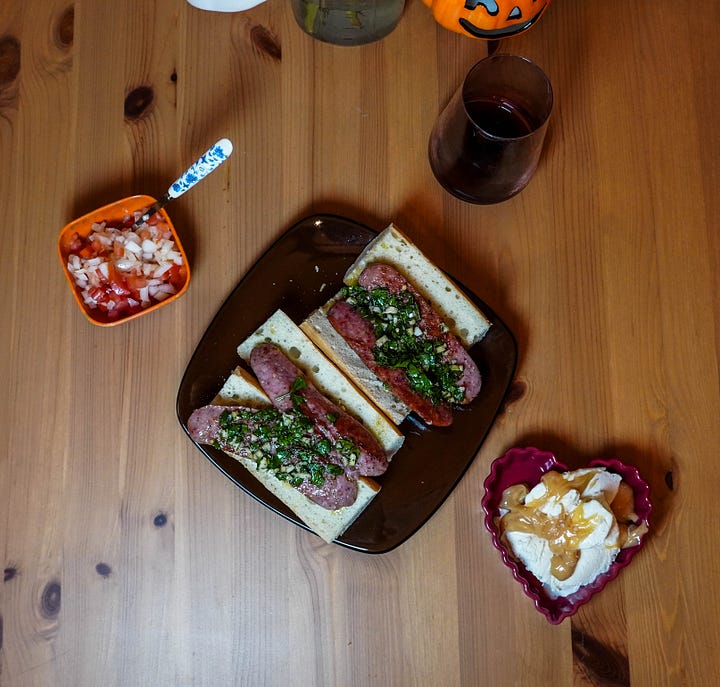
This Week's Recipes
Both choripán and dulce de leche are the kind of classic Argentine meals that can also be made the “lazy” way. I did not want to go the “lazy” way, and so I opted for recipes from Grillseeker and Manu's Menu to be slightly more authentic!
Core Recipes:
Supplemental Recipes:
Cooking Choripán and Dulce de Leche
Part of what I loved about this dish is that it was pretty dang easy to cook! That's why I want to start out with a recommendation: Make sure your ingredients (particularly your baguette) are top-notch; unfortunately, the HEB baguette did not do it for me this week.
If you're making the dulce de leche, I recommend starting with that. Heat some milk and sugar in a heavy pot on the stove; bring it to a boil, then reduce to a simmer and cook for about a half hour. You'll want to stir regularly here to make sure nothing burns or gets stuck to the bottom or sides of the pan.
When you've reduced your milk, toss in some baking soda and stir; it'll get a little frothy here, but it'll eventually chill out and cook down. Continue stirring until you've ended up with a thick, caramel-colored sauce. Then, transfer it to a bowl and cool completely.

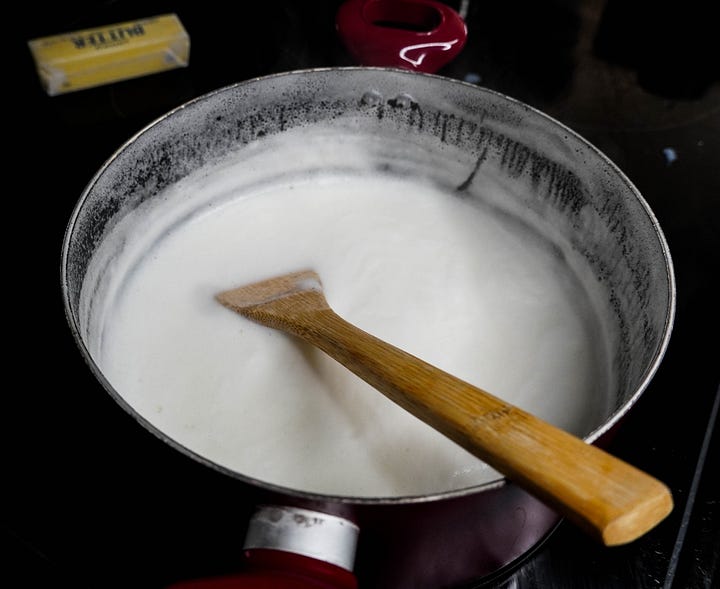
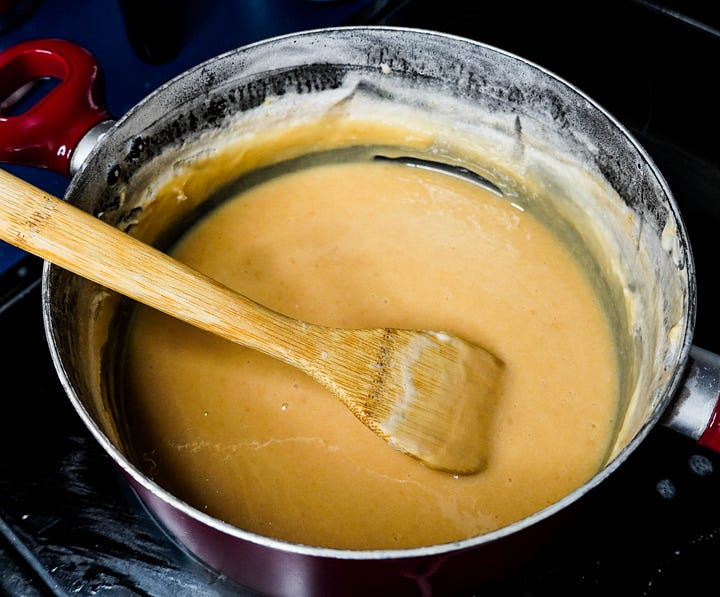
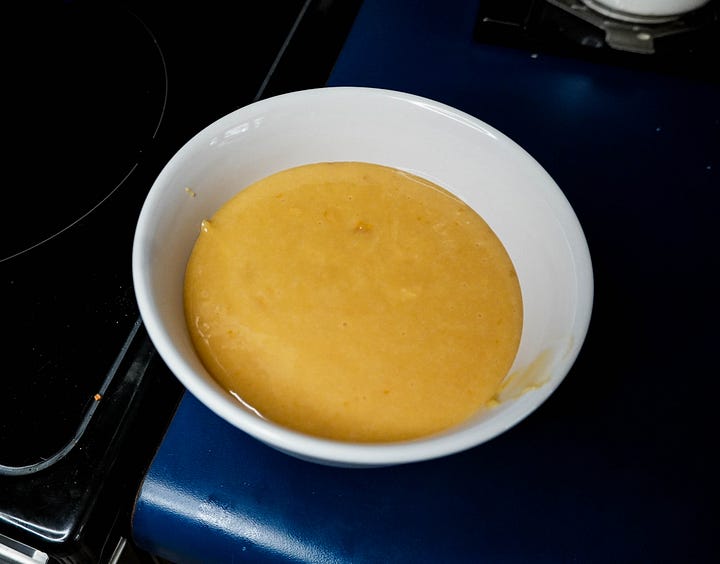
You can use your dulce de leche for just about everything — or even just eat it by the spoonful. I'd originally intended to make alfajores, a kind of Argentine cookie, but the recipe I followed was not a good one. The dough was too crumbly to work with. So, I just bought some ice cream and popped my dulce de leche on that instead. It was just as good!
A few hours before you want to make your choripán, get your sauces together. The first sauce is a simple salsa, which you'll make from diced tomato and onion mixed with salt, olive oil, and red wine vinegar.
The second is a chimichurri, which is made of olive oil, red wine vinegar, oregano, salt, pepper, and chopped garlic, parsley, and chilis.
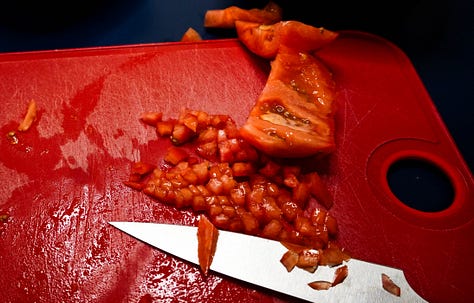
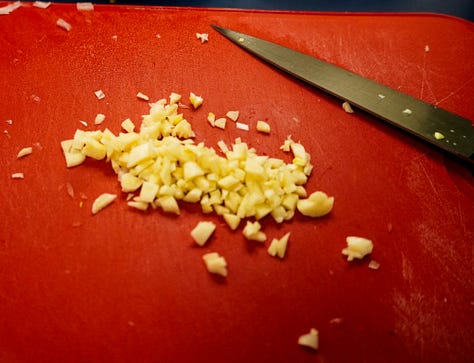
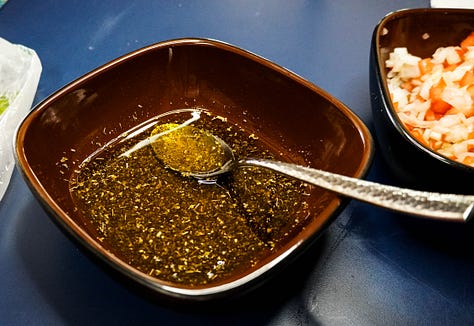
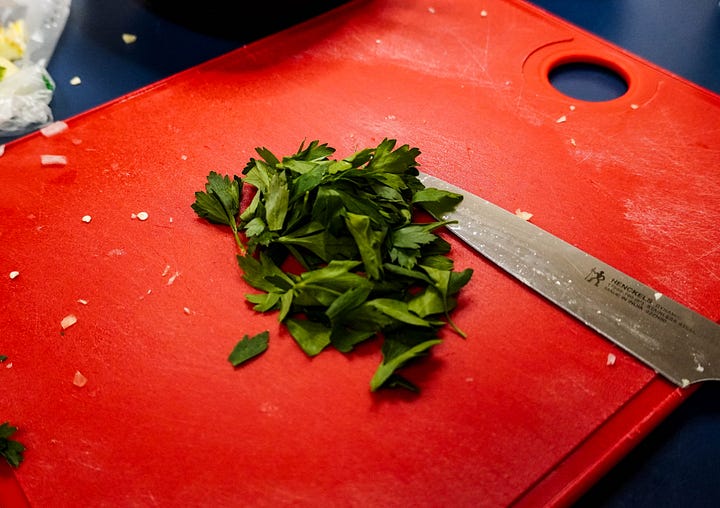
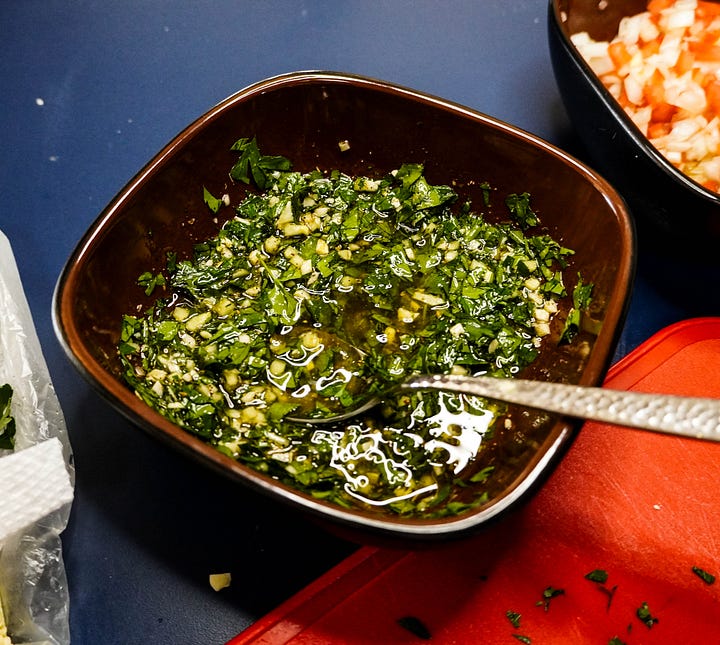
If you let these bad boys sit for a few hours, you'll get the best, most delicious results, since the flavors will have time to mingle.
Finally, it's time for the choripán! If you can get your hands on Argentine chorizo, you'll be best set up — but you can pick any sausage that makes you happy and that you're able to find at your local grocery store. I grabbed roasted garlic kielbasa because that's just the kind of person I am.
Grill up the weenies, then slice them in half and place them cut-side down on the grill. Drizzle some olive oil in your sliced baguette and grill it a bit as well, until it's lightly browned. When the sausage is done, flip it over and top it with some chimichurri.
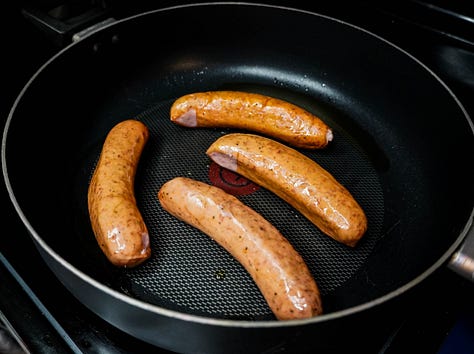
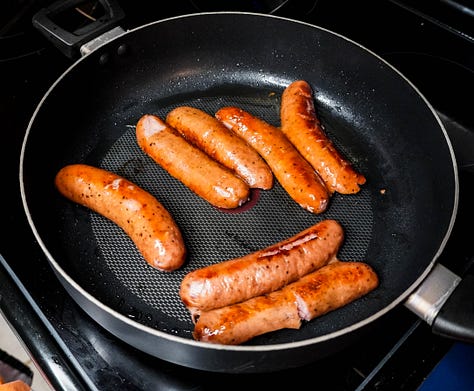

Assemble your sandwich by placing the sausage on the baguette, then adding on some extra chimichurri and salsa. Serve with an Argentinian red wine of your choice, and enjoy!
So, What's The Verdict?
I'm going to be honest: The whole cooking process for this edition of Grand Prix Gastronomy was a mess. I messed up the dulce de leche on my first try and had to start over after spending an hour in front of a hot stove, at which point I decided I simply could not be bothered to grill. (It is, after all, very hot in Texas.)
My baguette, too, left a lot to be desired. The ol’ HEB bakery is usually a trusted friend, but this baguette was extremely mid. Something crustier, with a chewier texture and bigger air pockets would have easily been so much better.
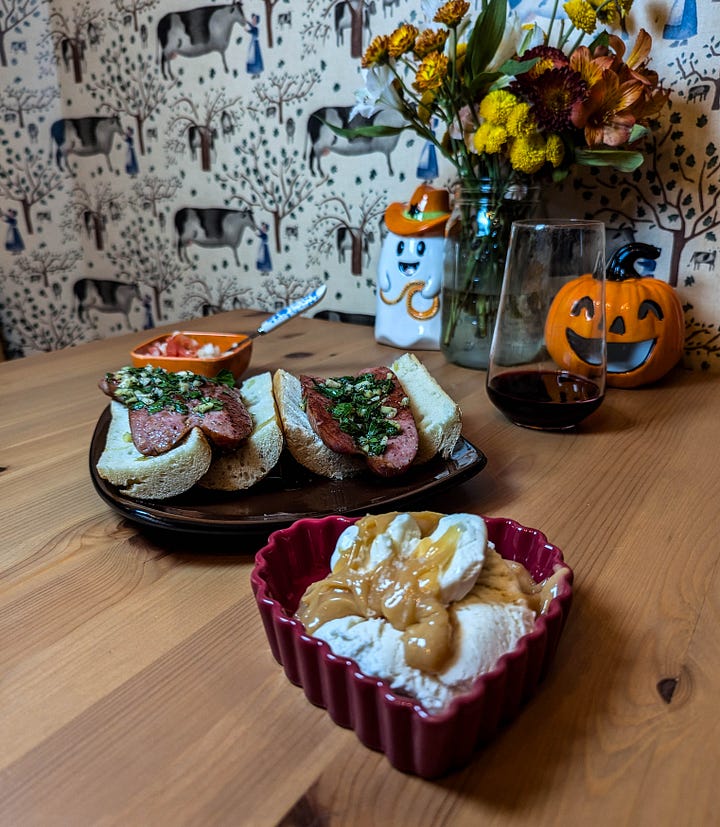
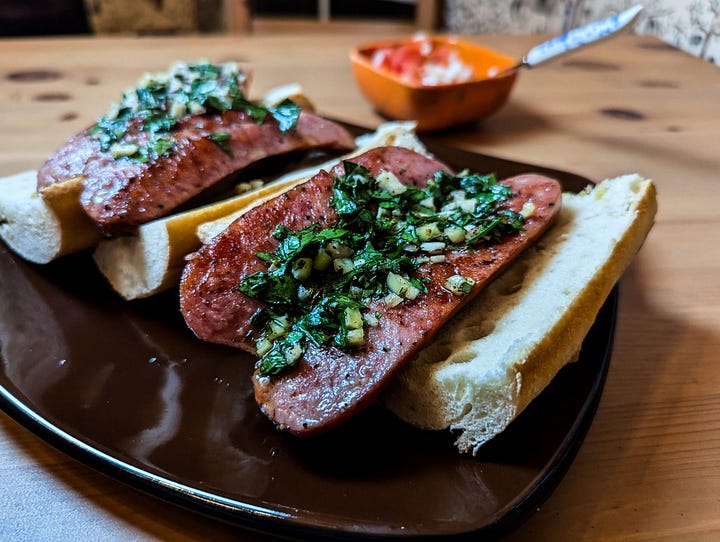
And despite that, everything was delicious. Like, seriously so good. There is no universe where sausage + carb + sauce is a bad time, but honestly? Putting a sausage on a baguette and absolutely dousing it in chimichurri was simply next-level incredible.
And the dulce de leche???? Omg???? Like taking a bite directly out of heaven? It's a little bit tedious to make, but if you can commit to hanging out by the stove for a while, you'll be well rewarded.
I'm very grateful for Argentina's travel board for organizing the interview with Franco Colapinto that gave me these delicious treats!
Ready… Set… COOK!
If you’re interested in seeing the progression of Grand Prix Gastronomy, you’ll be able to do so in a few places. Instagram will feature most of the visual content, while Substack will be a little wordier. If you need a handy mid-week roundup, you’ll be able to find those on Twitter.
Here are all the relevant links in one place, if you want to subscribe:
All Grand Prix Gastronomy-related content will be free — but if you want to drop me a donation on PayPal, that’s always welcome.
Plus, if you're looking to delve deeper into motorsport history, don't forget to check out my new podcast, Deadly Passions, Terrible Joys! I have a Patreon; sign up, and you'll receive extra content!





